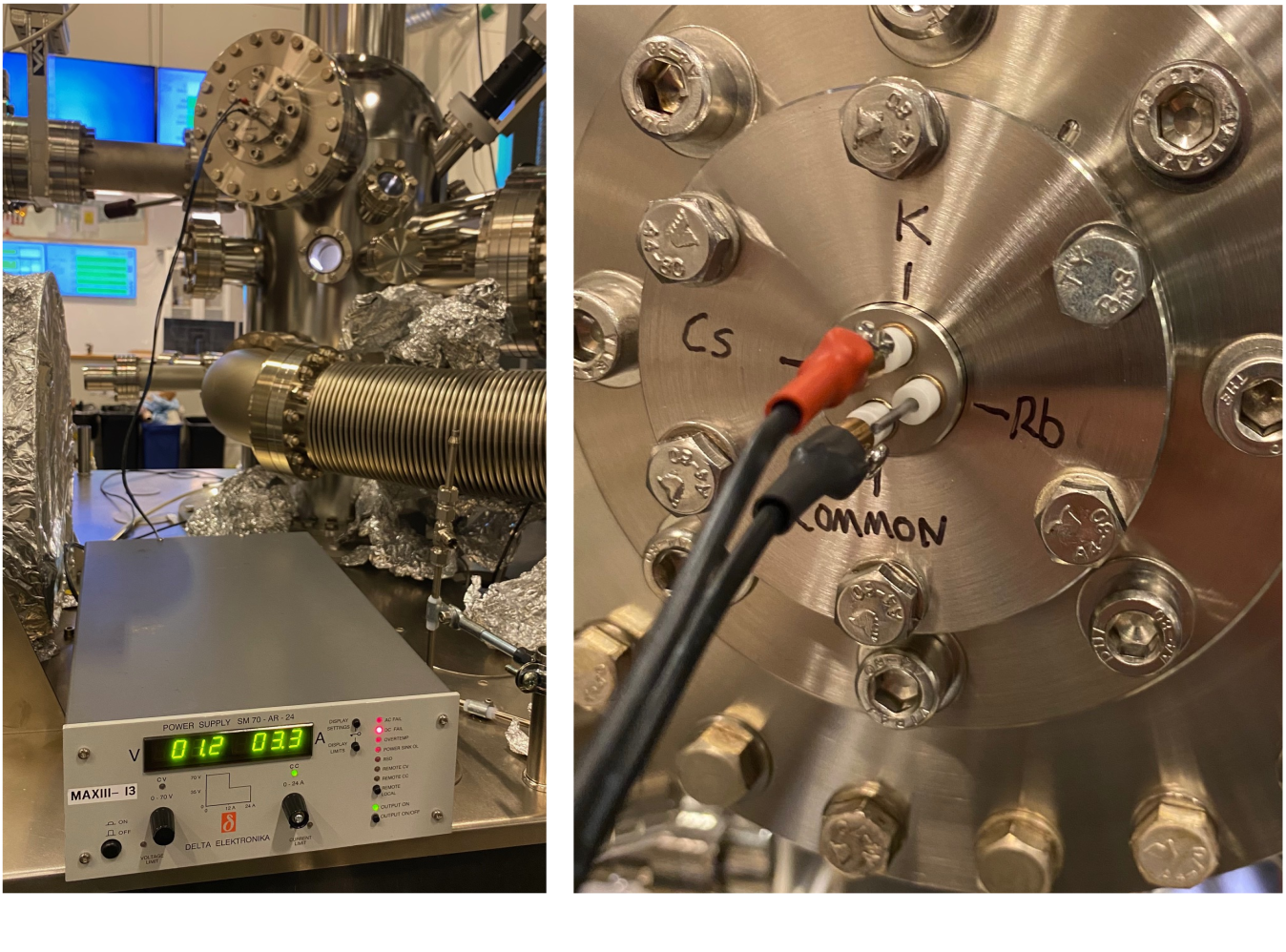Alkali deposition
The analysis chamber has a permanently mounted cluster alkali source (SAES type), enabling deposition of K, Cs and Rb on the measurement manipulator. This is done at the upper transfer level of the chamber - it’s not possible to deposit while measuring.

Source |
SAES product code |
Evaporation starts |
Suggested core level to monitor |
|---|---|---|---|
Rb |
RB/NF/4.8/17 FT10+10 |
4.5 A |
Rb 3d at 111.5eV |
K |
K/NF/3.1/17 FT10+10 |
4.5 A |
K 3p at ~18.5eV |
Cs |
CS/NF/5.5/17 FT10+10 |
4.2 A |
Cs 4d at 77eV |
See also: SAES datasheet
All sources can be degassed up to 3.3A without anything happening. According to the datasheet the ‘evaporation starts’ current is quite a bit higher; the values in the table above should correspond to core levels just starting to be detected after a 30s deposition. Our recommended procedure is to leave the source idling at 3A, ramp it to the desired evaporation current with the shutter closed, wait two minutes then open the shutter for the desired length of time. Ramp back down to 3A after closing the shutter.
Expect to need multiple depositions to get the coverage you want. However note that the evaporation you will achieve is a non-linear function of current and of time. The sticking coefficient is also highly dependent on the sample surface and temperature. As a general rule alkali evaporation will not work above 200K due to rapid re-evaporation or intercalation.
To operate the source, connect a DC power supply with the custom cable set. Please be very gentle with the feedthrough pins!
